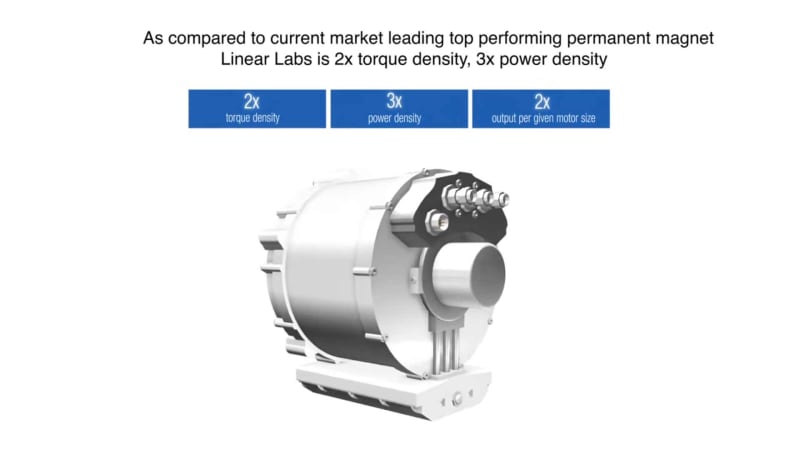The Hunstable Electric Turbine promises a revolution in electric motors
https://ift.tt/2ASzLnY

Linear Labs was founded as a father-son team based in in Ft. Worth, Texas six years ago. Prior to that, father Fred Hunstable designed electrical systems for nuclear power stations for companies like Ebasco and Walker Engineering before the U.S. put the kibosh on atomic energy generation. Son Brad Hunstable co-founded streaming service Ustream, sold to IBM for $150M in early 2016. Together, the Hunstables say they’ve created “a new class of electric motor” called the Hunstable Electric Turbine (HET), promising that “For the same size, same weight, same volume, and the same amount of input energy into the motor, we will always produce… two to three times the torque output of any electric motor in the world.”
The two main electric motor designs are called radial flux and axial flux, which employ a fixed stator and one or two spinning rotors. Linear Labs classifies the HET as a “3D circumferential-flux four-rotor permanent magnet motor,” combining radial and axial flux designs. Check out the video to see it in action, but the HET houses a single stator faced on all four sides by rotors, each side having the same polarity so that all magnetic fields move in the direction of motion.
Additional tech novelties include a copper winding layout resembling that in the newest wave of axial motors, which eliminates end windings, so all of the magnetic flux goes to torque generation. The winding design also needs less copper, saving weight. Software control allows the HET to overlap its power phases, and can alter the power phasing to emulate anything from a one-phase to a six-phase motor without changing any factor of the energy input into the motor. The HET runs on a lower DC link voltage, permitting lower switch ratings and smaller DC link capacitors. The increased torque production comes from standard iron ferrite magnets, obviating the need for rare earth magnets in many applications. And the HET doesn’t require expensive, specialized manufacturing processes to build.
Said to be able to scale down and up equally well, the first application is for a micromobility-sized HET going into a scooter next year. Linear Labs says its scooter motor produces 28 pound-feet of peak torque compared to the industry-standard competitor, the Segway Ninebot ES4 motor’s 13 lb-ft, when adjusted for volumetric and mass power density. That’s more than double output for the same size envelope, and Linear Labs says, “These improvements in performance will benefit consumers with the ability for longer range and more power to climb steep grades in ways currently not feasible.”
Not only does the company believe it can do this for electric cars (and electric motorcycles and air conditioners and flying car motors and wind turbines and so on), Linear Labs says it can do more. When it comes to electric cars, the company touts a “minimum 10% more range” from a given battery capacity with its motor. Furthermore, the HET is said to produce its superior torque at the same speed that the wheels turn. If this is the case, an EV maker could throw out the gearbox needed when using a traditional, fast-spinning motor and use the HET in a direct-drive configuration. That leads to less complexity, less cost, and less weight.
Well, assuming it all pans out as we’ve been told. We’ve spoken to the Hunstables and have a lengthy feature on the way about the motor, how it does what it does, and what the Hunstables want to do with it. Hint: one of the company’s YouTube videos is called “The Motor of the World.” With the amount of charlatanry in the EV space, the Hunstables understand how their claims can sound to the first-time reader, but Brad told us, “We’ve built these motors. We’ve tested these motors, we understand the physics, we understand the manufacturability, we understand the thermal management, so this is not just theoretical.” Stay tuned for the story.
Auto Blog
via Autoblog https://ift.tt/1afPJWx
October 7, 2019 at 03:20PM
